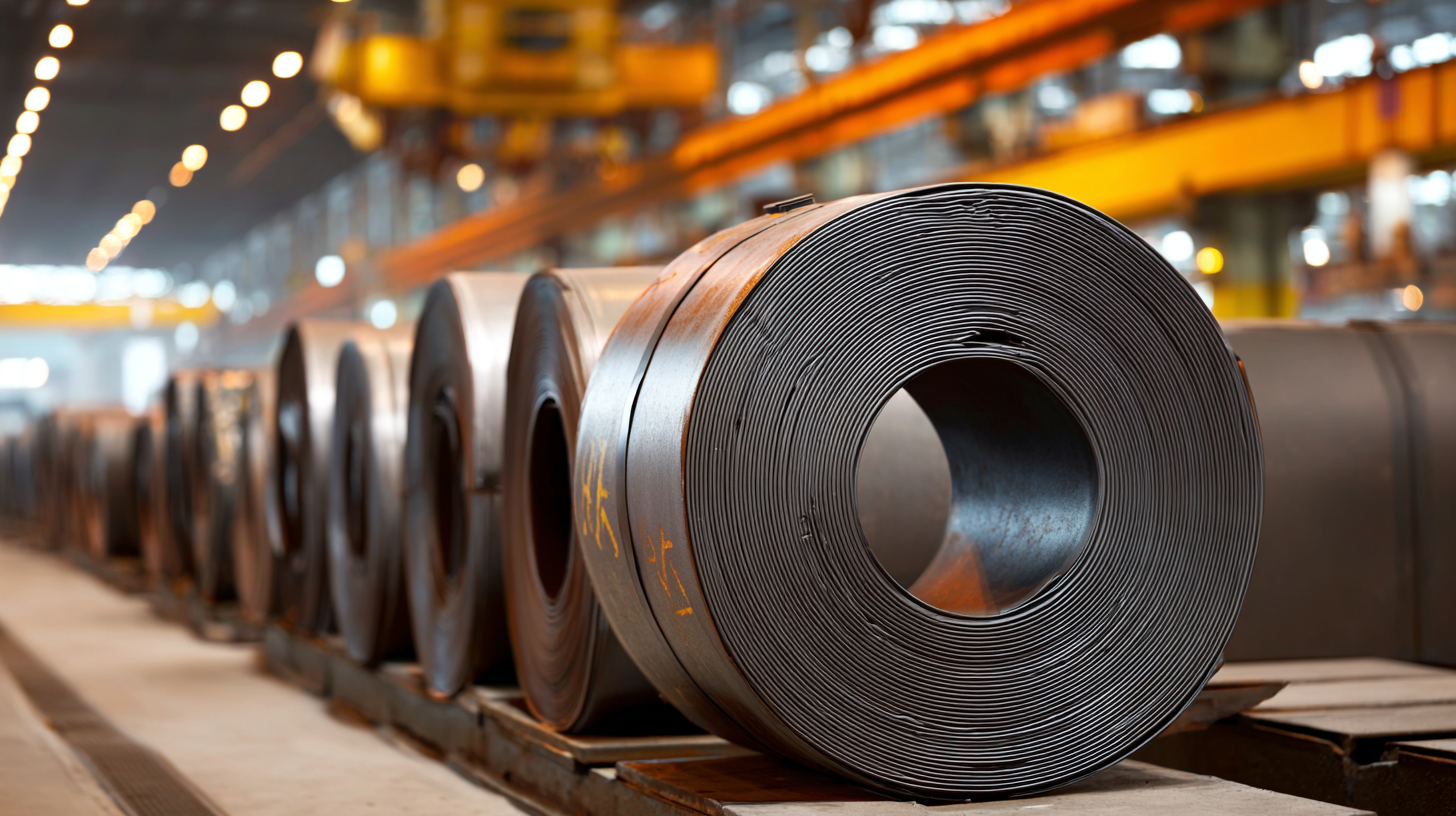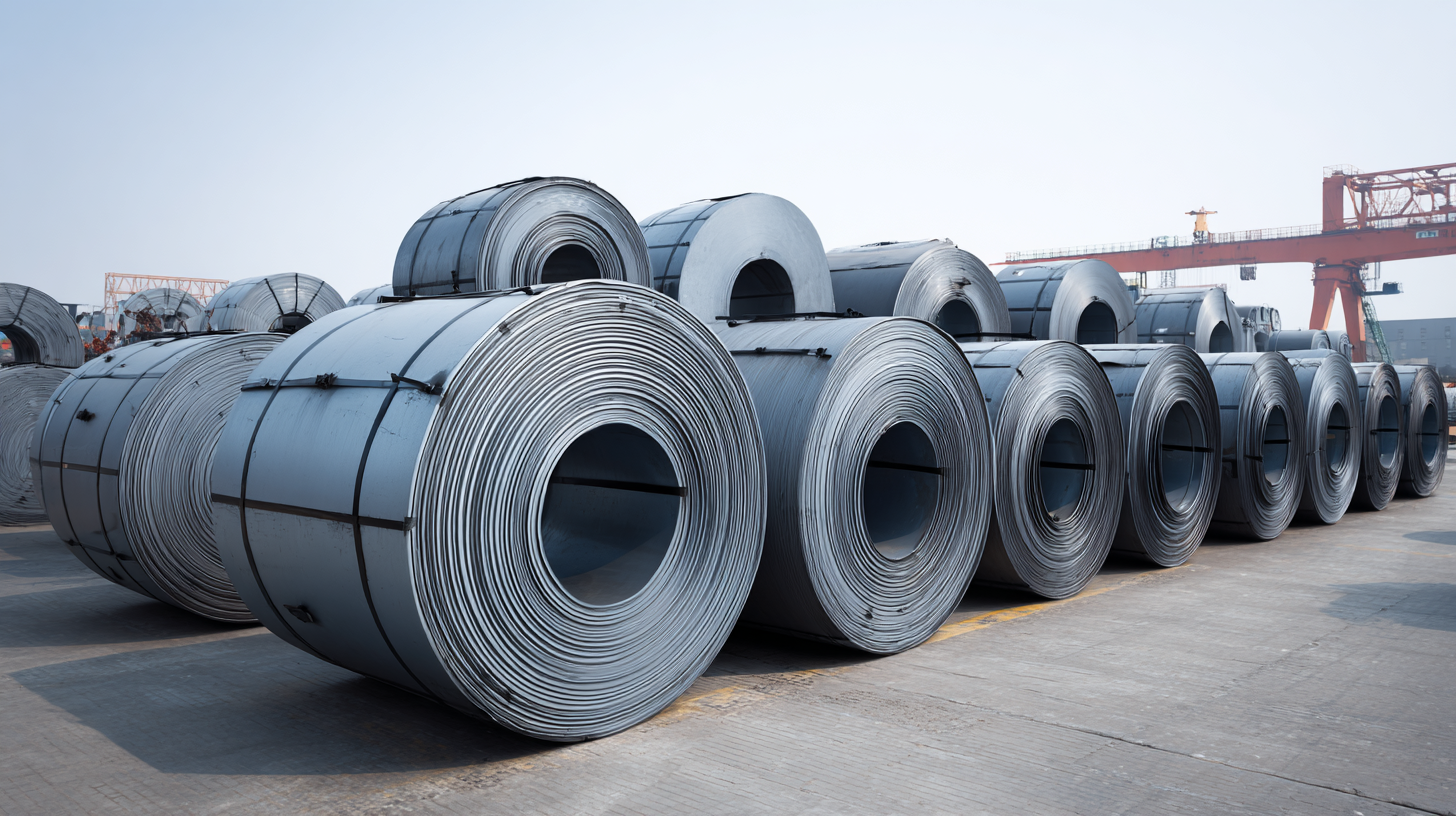In today's competitive market, the demand for high-quality materials such as Hot Rolled Low Carbon Steel Coil is surging across various industries, reinforcing its critical role in modern manufacturing and construction. According to a report by Grand View Research, the global steel market is projected to reach over $1.1 trillion by 2025, with hot-rolled steel products accounting for a significant share due to their versatility, strength, and cost-effectiveness. Industries such as automotive, construction, manufacturing, and energy are heavily investing in low carbon steel coils to enhance operational efficiency and product durability. As sustainability becomes a focal point, opting for Hot Rolled Low Carbon Steel Coil not only provides quality but also offers cleaner production methods that resonate with eco-friendly initiatives. In this article, we’ll explore the top five industries benefiting from this essential material and discuss seven compelling reasons why your business should prioritize sourcing it.

This image outlines the benefits and reasons to choose Hot Rolled Low Carbon Steel Coil, emphasizing its impact across various industries which prioritize quality and sustainability.
Low carbon steel coils have become indispensable in various industries, driven by innovations that enhance their applications and performance. The automotive sector, for instance, has harnessed the lightweight yet strong properties of low carbon steel, leading to more fuel-efficient vehicles. Innovations in corrosion resistance and formability have allowed manufacturers to create complex shapes and components that not only meet safety standards but also reduce costs and improve overall efficiency in production.
In the construction industry, low carbon steel coils are revolutionizing the way structures are built. Their strength and ductility make them ideal for steel framing, roofing, and other structural applications. With advancements in coating technologies, these steel coils now offer improved durability and lower maintenance requirements, making them a preferred choice for builders. Furthermore, the packaging industry benefits significantly from the versatility of low carbon steel coils, which are used for creating durable and lightweight packaging solutions, enhancing product life and reducing environmental impact. The ongoing innovations in this material are set to redefine standards across these industries, creating opportunities for sustainable growth and development.
This chart illustrates the top five industries that have significantly benefited from innovations in low carbon steel coil, showcasing their improved efficiencies and growth opportunities.
The low carbon steel market is experiencing pivotal changes driven by key trends in global infrastructure and manufacturing. According to the market research study from Custom Market Insights, the global demand for low carbon steel is projected to grow significantly from 2025 to 2035, propelled by the ongoing urbanization and increased investments in construction projects worldwide. This trend is prominently seen in regions concertedly enhancing their infrastructure, generating substantial demand for high-quality steel products such as hot rolled low carbon steel coils.
In particular, the rise of green steel production is reshaping the landscape of the steel industry. As highlighted in the growth forecast report, green steel initiatives are gaining momentum, particularly in India, where demand is expected to surge in alignment with climate goals and sustainable construction practices. The advancements in production technologies like Renewable Electric Arc Furnace (R-EAF) and Hydrogen Direct Reduced Iron are pivotal in efficient steel production processes, aiming for decarbonization. The collective efforts of countries like China, India, and the US highlight a broader commitment to reducing carbon footprints in the steel sector, ensuring a greener future for this crucial industry.

The construction and manufacturing sectors are witnessing significant advancements through the application of hot rolled low carbon steel coils. These materials offer enhanced structural integrity and flexibility, which are crucial for sustainable construction practices. According to a recent report by the World Steel Association, low carbon steel constitutes approximately 50% of global steel production, underlining its pivotal role in modern engineering projects.
One notable application of hot rolled low carbon steel is found in building frameworks designed to meet ambitious carbon neutrality goals. As highlighted during the World Robot Conference on August 18, the integration of robotics in construction is revolutionizing the industry. Automation not only increases efficiency but also ensures precision in the use of these steel materials, thereby reducing waste and energy consumption. The adoption of smart construction technologies helps companies adhere to environmental standards while optimizing resource utilization.
In manufacturing, low carbon steel is essential for producing durable goods ranging from automotive components to intricate machinery parts. The lightweight and high-strength nature of these coils allows for the development of safer and more efficient products. Furthermore, recent advancements in composite materials, particularly carbon fiber, have enhanced performance capabilities in this sector, paving the way for innovation and sustainability. Industry analysts predict that the market for low carbon steel will continue to expand as manufacturers increasingly prioritize eco-friendly solutions.

The adoption of hot rolled low carbon steel coil is driven by several critical factors, particularly its versatility and cost-effectiveness. According to a report by Market Research Future, the global low carbon steel market is projected to grow at a CAGR of 4.5% between 2021 and 2027. This growth is largely attributed to the increasing demand from various sectors, including automotive, construction, and manufacturing. In these industries, the unique properties of hot rolled low carbon steel, such as its strength and formability, make it an ideal choice for components ranging from frames to structural supports.
Another significant factor is the rise of sustainable manufacturing practices. Hot rolled low carbon steel is often recycled and can be produced using energy-efficient methods, aligning with the growing emphasis on sustainability in industrial operations. The World Steel Association highlights that steel recycling can reduce energy usage by up to 75%. As regulations tighten and consumers demand environmentally friendly solutions, companies are increasingly turning to hot rolled low carbon steel as a means to meet both regulatory requirements and consumer expectations, driving broader adoption across sectors.
The choice of low carbon steel solutions has significant environmental benefits that cannot be overlooked.
As industries increasingly prioritize sustainability, hot rolled low carbon steel coil emerges as a frontrunner due to its reduced carbon footprint compared to higher carbon alternatives.
According to a report by the World Steel Association, the production of low carbon steels can result in a 60% reduction in CO2 emissions during fabrication phases.
This substantial decrease is vital for industries aiming to meet stringent climate goals while maintaining operational efficiency.
Moreover, utilizing low carbon steel contributes to the circular economy. The recycling rate of steel is notably high—an estimated 85% of steel products are recyclable without losing material quality.
This not only minimizes waste but also significantly conserves energy. The U.S. Department of Energy states that recycling steel saves about 74% of the energy required to produce new steel from raw materials.
By choosing low carbon steel solutions, industries can make strides towards lowering their environmental impact and promoting sustainable practices that resonate with eco-conscious consumers.





